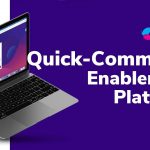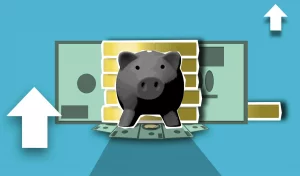We need to have an online grocery store as the backbone component for any grocery shop management system to work at optimal levels. Sadly, many food businesses fail to recognize the importance of both aspects of the business.
Even for a thriving real-life grocery store with an alter version of an online platform for internet-based clients, problems commonly occur due to underutilization of the grocery shop management system. Either these companies sign up for an ordering platform that isn’t designed to cater to the large volume of requests, or it doesn’t work as advertised in the first place.
If you own a grocery store and are looking forward to making the transition to the online version of the business, there are a few essential things to consider.
6 Key Features For Online Grocery Shop Management System
Although we have highlighted some of the core components of an online grocery shop management system, there are a few additional features to consider. Please note that many companies do not have the same operability concerns or development infrastructure to offer an order management system against your business requirements.
With the insane amount of aggregator-based and direct online ordering platforms available to business owners in the food industry, the best course of action would be to sign up for multiple programs’ evaluation plans.
To that effect, evaluation programs’ grace period is generally based on a 15 -30 days no-payment policy. It may or may not offer you the full features, but the software will be capable of demonstrating its efficacy.
The following key features in a grocery shop management system are reportedly sought out by up-and-coming grocery store owners from all over the world.
-
Shop Management Module
To stay current, vendors can edit their shop details, contact information, delivery slots, and other information. For an ideal grocery shop management system, the shop management module is a perk that business owners can use from time to time, especially if they’re spearheading a multi-branch location setup.
-
Order Management Module
Order management for a grocery shop management system systematically enables multiple order requests at a single point in time. In addition, the front-side app users of a respective mobile grocery shopping app can get their orders fulfilled quickly.
App users are also offered multiple payment modes, refund status, and overall order history. Meanwhile, admins of the grocery shop management system get a listed view of pending orders from aggregated clients, canceled orders, ongoing withdrawal requests, and other things.
-
Tracking Reports
For a standard grocery shop management system, tracking reports are offered in a summarized version of overall sales, revenue vs. expense breakdown, and vice versa.
On the contrary, a ‘well-versed’ grocery shop management system, like Blink, offers the altered version of tracking reports at multiple levels.
We have a dynamic dashboard powered by Microsoft Bi tool integration for a quick overview of customer buying patterns, revenue streams in filtered forms, and much more. These reports are an excellent way for Blink clients to engineer their digital items for grocery store users for increased chances of upselling.
-
Grocery shop management system
Inventory management comes in the form of forecasted requirements to replenish the stock ahead of time. Since online grocery stores are constantly sending out deliveries to customers, there has to be a robust inventory management module to reflect accurate inventory status.
A grocery shop management system wouldn’t be called a ‘full-fledged’ product if it weren’t for a designated inventory management feature. These days, online groceries integrate a 3rd party app to keep track of inventory replenishment requirements, product status from multiple vendors, and inventory items availability status.
-
Product Management
Product management is an online item management module where grocery store owners can add, edit or remove an item in the online grocery app. Based on buyers’ preferences and active spend habits, many grocery items are too high in popularity or don’t sell.
In the latter case, if available, low-selling items can be paired with high-selling products to supplement any presell opportunities. Furthermore, digital product management features in a grocery shop management system also enable back-end users to change product status.
Sometimes, certain products aren’t available due to unavailability from the suppliers’ side. In such cases, the status can be changed to ‘Unavailable’ by online grocery store admins to prevent possible inconveniences to online customers.
-
Logistics and Order Delivery
In a December 2021 post, Yahoo talked about the status of online grocery apps from the near future scalability point of view. Since grocery stores have their fair share of the consumer-driven economy, which was recently fueled by the COVID-19 pandemic, things are expected to grow faster.
By 2025, the online grocery store marketplace will grow at a CAGR of 24%, roughly amounting to a whopping $250 Billion worth.
Such scalability also calls for appropriate logistic and delivery channels for online and real-life grocery stores. That’s where the grocery shop management system’s logistic support and fleet management aspects come in.
Blink offers seamless integration of a dedicated fleet management portal in its platform to all existing and new customers. Although still under development, this system is designed to actively track and monitor order delivery status, average delivery time, late vs. on-time deliveries, and vice versa.
A dedicated fleet management system can also incentivize delivery agents’ performance graph in a standalone case. It is easier to reward agents who have made most deliveries in any given timeslot.
Furthermore, for any delivery app integration in a grocery shop management system to work, route suggestion is an added perk that can minimize the delivery time slots. This system is based on GPS navigation automation, and it is designed to offer the shortest route between a rider’s current location and the order delivery site.
What Else Is There To Know About a Grocery Shop Management System?
At the moment, grocery shop management systems are offered via two main platforms:
- Direct Ordering
- Aggregators
Blink Co. is one of the most relevant examples of a direct ordering platform.
This is where the online restaurant, retail, and grocery store business owners have a free hand overrunning their virtual shops.
The platform is based on a SaaS model, where vendors have to pay a nominal subscription fee every month. In addition to these payment plans, there’s a minimal commission fee incurred on incoming orders on the vendors’ side.
The best part is the bleeding edge technology stack. Blink is a quick-commerce enablement platform where different features make possible through fast order fulfillment, overall customer satisfaction rate, and business scalability.
For instance, if we were to take the example of the Microsoft Power Bi. Reports as a standalone case, we can see that these reports can be used to:
- Further optimize and engineer app-specific menus, items, and products
- Get a filtered view of time-specific sales in real-time mode
- Get item suggestions based on buyers’ patterns
Furthermore, Blink doesn’t require a local software installation to work. Vendors are offered instant access to the branded version of their mobile app, alongside a desktop variant of their respective shops. It’s a bargain well worth the price these direct ordering companies are currently going for.
On the contrary, aggregator apps are like FoodPanda, GrubHub, Instacart, and vice versa. They dispense resources in marketing and better chances of showcasing your online grocery store to millions of people on the app.
However, the downside to using an aggregator-powered grocery shop management system is the inability to take complete control of your CRM data, among many other things.
Vendors have to keep up with aggressive commission percentage – it’s anywhere between 25% – 45% of the individual incoming order ratio. This is one of the main reasons behind failure to break even, or let alone, see any hints of a profit margin.
Also Read: UberEats Shuts Down In The Middle East, Saudi Arabia and Egypt
Regardless of which type of grocery shop management system you choose to go for, it will have its pros and cons.
Be advised that none of the order management systems can be dubbed as a one-off solution to all your business requirements. Some programs might be expensive for the features they’re currently offering.
As stated earlier in this post, make sure that you analyze your existing grocery store’s business requirements against vendors and sign up for a trial version of the program for evaluation purposes.
Feel free to post your concerns in the comments section below or write to us directly for any technical walkthroughs.
[INSERT_ELEMENTOR id=”2061″]
Related Articles:
 Ultimate Quick Commerce Guide: Let’s Fulfill Wishes Instantly
Ultimate Quick Commerce Guide: Let’s Fulfill Wishes Instantly
 The Best 10 Quick Commerce Grocery App Features To Use In 2022
The Best 10 Quick Commerce Grocery App Features To Use In 2022
 How to Manage Returns: 5 Tips for Successful Returns Management
How to Manage Returns: 5 Tips for Successful Returns Management
 How Blink Powers Businesses with Fast Order Fulfillment
How Blink Powers Businesses with Fast Order Fulfillment
 Why your business needs a direct online ordering system in Saudi Arabia
Why your business needs a direct online ordering system in Saudi Arabia






